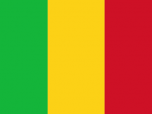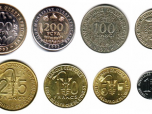
 Known as the “Jewel of West Africa’s Crown”, Mali provides an adventure on this western Saharan nation you will not experience any other place. Mali has played an important role in great African empires of the past. It is a landlocked nation bordered by other great African countries like Algeria, Niger, Burkina Faso, Cote d’Ivoire, Mauritania, and Guinea.
Known as the “Jewel of West Africa’s Crown”, Mali provides an adventure on this western Saharan nation you will not experience any other place. Mali has played an important role in great African empires of the past. It is a landlocked nation bordered by other great African countries like Algeria, Niger, Burkina Faso, Cote d’Ivoire, Mauritania, and Guinea.
The importance of Mali continues to be displayed to this day. Visiting legendary attractions like the city of Timbuktu, the Djene mosque, and the Niger River will keep you busy. Timbuktu’s greatest contribution to civilization is learning. It is believed that some of the earliest universities in the world had been established here. Another group of attractions are: the imposing sight of the Niger River at Koulikoro and a trek down Dogon Country will capture your imagination. Evidence such as paintings on rocks and different carvings point to man’s early existence in the Gao and Timbuktu area, this will provide the traveler a history lesson to remember.
Centrally located, Mali became important during the trans-Saharan trade of slaves, gold, salt, and many other precious items. Bamako is the capital of Mali and is its largest city. The country itself covers an area of 1,240,192 square kilometers with a population of more than 14.5 million people.
Like other African nations, you will need to obtain a visa when visiting Mali, which are available at the border for a fee. The hot months run from October to February, very hot months, April through June. There are only two months of “wet” weather here, July through august.
The language spoken here is French, so if you “parlez”, you’re in good shape. You can get around Mali on $25.00 USD a day. The currency used is the West African CFA franc. Euros are the best currency to carry, while US dollars are good, they charge a little extra when you exchange them to the local currency. Sorry, ATM’s not that popular in Mali.














